How China’s 2025 Tariffs Are Changing EU Supply Chains?
Global trade in 2025 is more volatile than ever, primarily driven by escalating tensions between the United States and China. As two of the world’s largest economies engage in a trade war, their retaliatory tariff policies are not only disrupting bilateral trade but also sending shockwaves through supply chains across Europe.
With China recently imposing up to 125% tariffs on all U.S. goods in response to increased U.S. tariffs on Chinese imports (now as high as 145%), other regions, including the European Union (EU), are caught in the crossfire. While not directly targeted, EU economies are experiencing ripple effects in trade routes, sourcing strategies, and manufacturing dynamics.
In this article, we’ll explore why China introduced these new tariffs, how they are indirectly impacting EU supply chains, and what strategic responses EU countries can adopt to manage these changes.
Why China Introduced New Tariffs?
In April 2025, China’s Ministry of Commerce announced a significant increase in tariffs on U.S. imports from 84% to 125%. The reason for China’s retaliation against Trump’s tariffs with counter-tariffs on US goods was followed by a series of escalations, including the U.S. raising tariffs on Chinese goods from 20% in March and then later to 145% in April as part of a broader protectionist policy under the Trump administration. Read more about these in detail on our separate blog about Trump China tariffs 2025.
According to Chinese officials, these countermeasures are not just economically motivated but also politically charged. During a meeting with Spanish Prime Minister Pedro Sánchez, Chinese President Xi Jinping labelled the U.S. approach as “unilateral bullying,” urging the EU and other allies to “jointly resist” and protect multilateral trade norms.
China’s goals are fourfold:
- To counter economic pressure: The tariffs are designed to inflict comparable economic pain on U.S. exporters, especially in agriculture, automotive, and tech sectors.
- To assert trade independence: China wants to show that it won’t be economically cornered and is willing to take a stand, even at domestic cost.
- To encourage domestic demand: By making foreign goods less competitive, China aims to boost demand for local products and stimulate internal manufacturing.
- To reposition its trade alliances: Beijing is actively reaching out to the EU, South Asia, and Africa to realign its trade partnerships.
However, these aggressive trade policies, while targeted at the U.S., have also triggered unintended consequences for global trade dynamics, particularly in the EU.
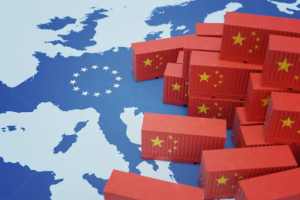
How do These Tariffs Indirectly Affect the EU?
Although EU countries are not subject to either the U.S. or Chinese tariffs directly, they are deeply interconnected with both economies. The EU is a major trading partner for both China and the U.S. However, the knock-on effects of this trade war are reshaping supply chains, pricing structures, and business decisions across the continent.
Supply Chain Disruptions
Many European firms operate within global value chains. For example, an automotive part may be designed in Germany, sourced in China, assembled in Eastern Europe, and shipped to the U.S. With tariffs now inflating costs and causing logistical delays between China and the U.S., the reliability of these supply chains is at risk.
The European Union is also concerned about a potential oversupply of low-cost Chinese goods flooding its markets as a result of U.S. tariffs redirecting trade flows. This situation is prompting discussions between EU and Chinese officials on how to manage trade diversions and maintain market stability.
This is why businesses are actively reassessing their sourcing strategies, and for many, the United Kingdom is becoming a top alternative. Not only does the UK offer a tariff-friendly trade environment, particularly with the U.S., but it also benefits from a robust industrial base and strategic geographic location. This makes it an ideal destination for companies seeking to reduce dependence on China without sacrificing quality or access to Western markets.
Increased Competition from Diverted Chinese Exports
As China finds its goods less competitive in the U.S. due to high tariffs, it is seeking new markets, with Europe being a prime target. Chinese companies, now shut out of the American market, are offering steep discounts in the EU. While this may benefit consumers in the short term, it’s putting intense pressure on local manufacturers, especially SMEs.
This heightened competition is pushing some EU firms to shift parts of their supply chain to more protected environments, such as the UK. UK-based industrial partners like Kirmell play a key role in supporting this transition.
Kirmell provides precision manufacturing services, including CNC machining, presswork, fabrication, and laser cutting, enabling international companies to establish a stable and compliant supply chain presence within the UK. This allows businesses to maintain high production standards while avoiding the trade volatility of the U.S. and China.
Contact us now for more information, or read our brochure to understand the services we offer and how they might benefit you.
Logistics and Transportation Costs
Another indirect hit is on freight and shipping. As supply chains are rerouted to avoid high-tariff zones, transport costs are rising due to longer distances, complex customs processes, and shifts in port activity. Shipping lines are adjusting schedules, and demand surges on alternative routes are pushing prices up. These added expenses are being passed down to EU businesses and, ultimately, to consumers.
Slower Investment and Rising Uncertainty
The volatile trade environment is shaking investor confidence across the EU. Multinational companies that operate in both China and the U.S. are hesitant to commit to new projects or expand current operations due to unpredictability in trade policy. As the rules keep changing, businesses are delaying investments, holding off on expansion plans, and redirecting capital to more stable regions.
Again, the UK is emerging as a business-friendly, regulation-aligned option for foreign investors. Its political stability, advanced infrastructure, and growing manufacturing support services offer reassurance to firms looking for predictability in uncertain times.
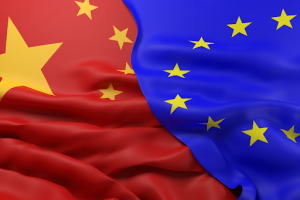
What Can EU Countries Do in Response to China’s Tariffs?
Faced with these growing challenges, the EU needs a coordinated and forward-looking approach. Here are some of the most viable steps the region can take:
Strengthen Trade Agreements Beyond the U.S. and China
Diversifying trade relations is essential. The EU should deepen partnerships with regions like Southeast Asia, Latin America, and Africa, where trade routes remain open and tariffs are minimal. Active promotion of agreements like the EU-Mercosur and EU-ASEAN pacts can help reduce dependence on the U.S.-China corridor.
Promote Intra-EU Supply Chains
Strengthening supply chains within the EU helps reduce exposure to global trade shocks. For example, if a company in Germany or Spain is currently outsourcing components from China, the ongoing tariff tensions may prompt them to explore closer, more stable alternatives.
In such cases, the United Kingdom becomes a strategic option, offering low tariffs, proximity to Europe, and strong manufacturing capabilities. UK-based firms like Kirmell provide high-quality component manufacturing, making it easier for EU companies to shift part of their supply chain without major disruption.
Invest in Strategic Sectors
The EU must continue investing in critical industries such as semiconductors, renewables, pharmaceuticals, and green technologies. These sectors not only hold strategic importance but also face the most disruption from tariff wars. Funding research and encouraging pan-European cooperation will ensure long-term independence.
Engage in Active Diplomacy
The EU has an opportunity to act as a global mediator. By taking a leadership role in the World Trade Organisation (WTO) and other multilateral forums, it can advocate for trade reforms, dispute resolution, and a rules-based global system that benefits open economies.
Support SMEs and Local Industries
Small and medium-sized enterprises are the most exposed to rapid changes in global trade. Governments should consider providing grants, tax relief, export credits, and logistics subsidies to help local firms survive the turbulence and compete against underpriced imports.
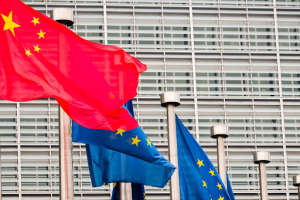
Conclusion
China’s 2025 tariff retaliation, while aimed at the U.S., has far-reaching consequences that extend deep into the European Union. From disrupted supply chains and rising costs to shifting trade dynamics and increased competition, the EU is already feeling the strain of a conflict it did not initiate.
But within this challenge lies an opportunity. By reinforcing internal trade links, diversifying partnerships, and strategically investing in future-ready industries, the EU can not only weather this storm but also emerge stronger and more self-reliant.
Global trade may be in flux, but with careful planning, diplomacy, and innovation, Europe can adapt to the new landscape, building resilient supply chains that are less vulnerable to geopolitical shocks.
Kirmell: A Strategic UK Manufacturing Partner for EU Businesses
As EU companies seek ways to minimise the risks posed by the ongoing U.S.-China tariff war, many are turning to the United Kingdom for stability. Kirmell, a UK-based precision manufacturer, offers EU firms a reliable and tariff-friendly solution to maintain their supply chains without the uncertainties of global trade disputes.
With expertise in heavy industrial manufacturing and export-ready operations, Kirmell supports businesses across Europe in strengthening their production strategies.
What Kirmell Offers EU Businesses:
Precision Manufacturing: CNC machining, laser cutting, presswork, fabrication, and welding, tailored for industrial and engineering applications.
Component Supply & Support: Ideal for businesses needing high-quality, UK-sourced components to replace disrupted imports from China or the U.S.
Prototype & Development Assistance: Rapid tooling and engineering support to bring new products to market quickly and efficiently.
ISO 9001:2015 Certified: Ensures consistent, high-quality output that meets international standards.
Export-Friendly Location: Strategically based in the UK, outside of EU-wide tariffs and unaffected by U.S.-China duties.
Reliable Supply Chain Partnership – Helps EU firms diversify suppliers and establish long-term stability in manufacturing operations.
By partnering with Kirmell, EU businesses can future-proof their supply chains and continue serving Western markets confidently, without being caught in the middle of global tariff conflicts.
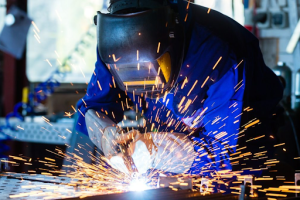
FAQ’s
Why did Trump announce tariffs against Canada, Mexico, and China?
How are China tariffs are affecting global supply chains?
What impact do China's tariffs in 2025 have on manufacturing in Europe?
Is China redirecting exports to the EU due to U.S. tariffs?

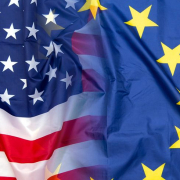
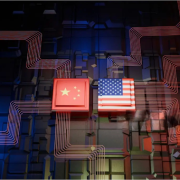
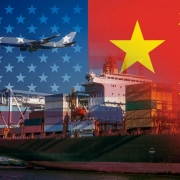
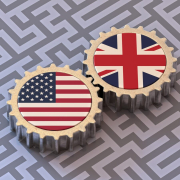



Leave a Reply
Want to join the discussion?Feel free to contribute!